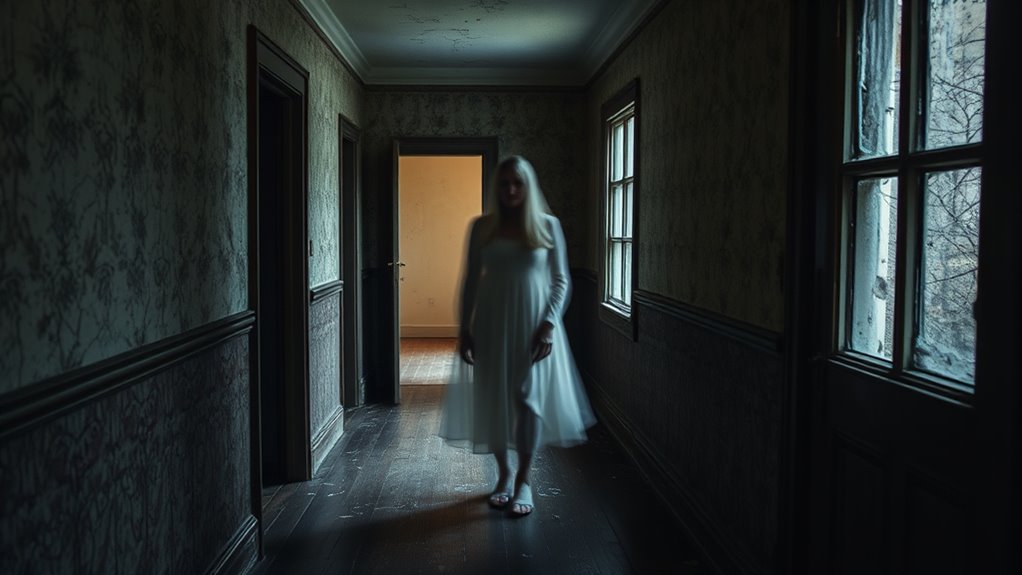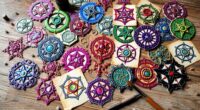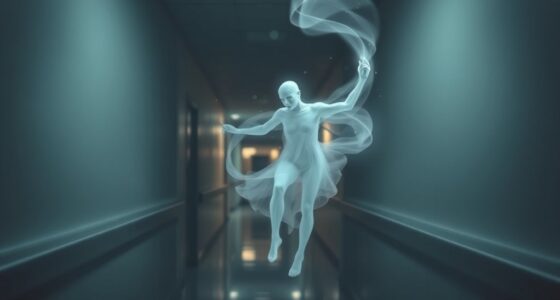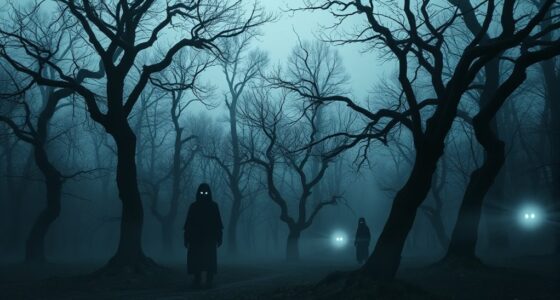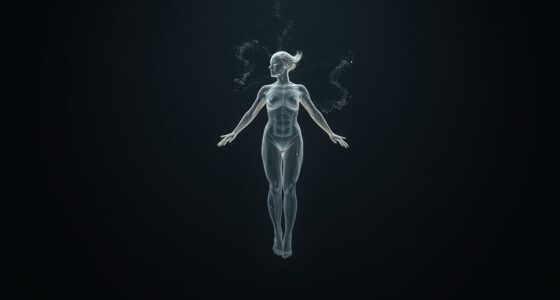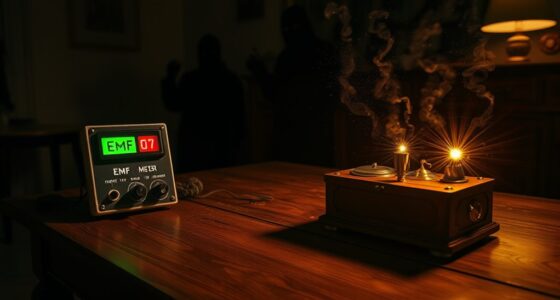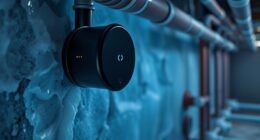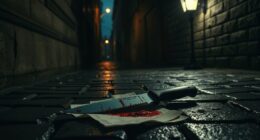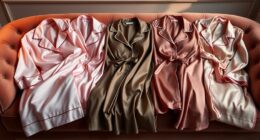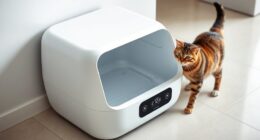When photos appear to show ghosts, it’s often due to camera flaws, lighting tricks, or your own perception biases. Camera artifacts like lens flare, sensor noise, or digital glitches can create ghostly shapes, while poor lighting or reflections distort images. Your mind also tends to see familiar forms, like faces or figures, in ambiguous images—a phenomenon called pareidolia. Understanding these natural causes helps you see through illusions and recognize when images really lie; uncover the details behind these tricks to learn more.
Key Takeaways
- Camera artifacts like sensor noise and lens flare create false ghostly shapes mistaken for spirits.
- Poor lighting and reflections produce illusions that mimic paranormal figures in photographs.
- Human perception biases, such as pareidolia, lead us to see faces or figures in ambiguous images.
- Digital processing and compression can introduce distortions that resemble ghost images.
- Critical analysis of technical flaws and environmental factors helps debunk misleading or false paranormal photos.
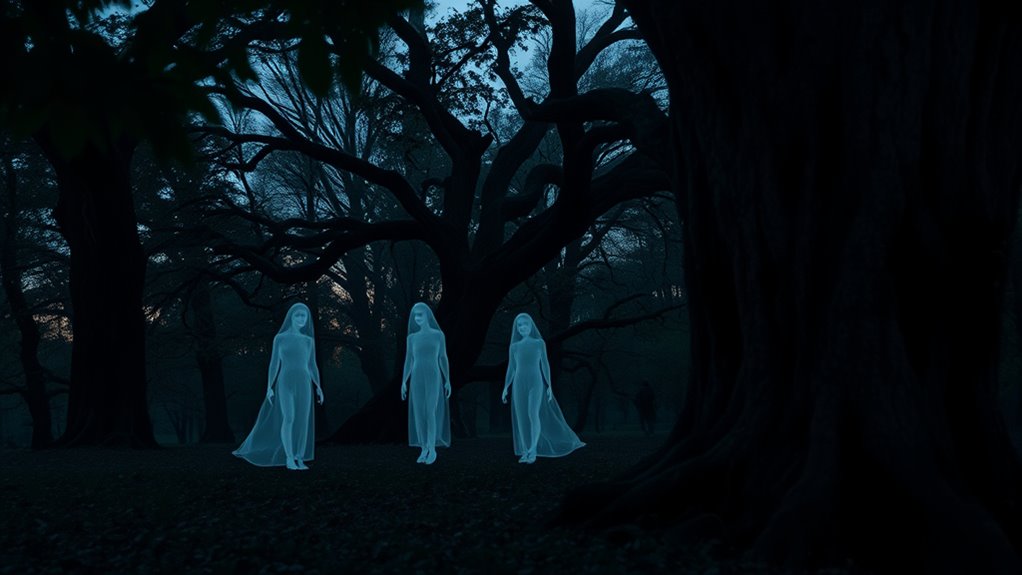
Many so-called ghost images in photographs are actually illusions created by camera flaws, lighting conditions, or digital artifacts. When you see a translucent figure or an unexplained shape in a picture, it’s tempting to believe you’ve captured a ghost. However, more often than not, what you’re witnessing are the effects of camera artifacts or psychological illusions that deceive your perception. Camera artifacts are unintended anomalies produced during image capture or processing, such as sensor noise, lens flare, or digital compression errors. These flaws can create strange shapes, blurs, or halos that resemble ghostly figures but are purely technical glitches. For instance, lens flare caused by direct sunlight can produce light streaks or orbs that look like floating spirits, especially when combined with reflections or distortions in the lens. Similarly, sensor noise—grainy specks that appear in low-light images—can sometimes resemble shadowy figures or faces, leading you to misinterpret the photo’s content. Additionally, sensor limitations can cause color distortions or image degradation that contribute to ghostly appearances. Lighting conditions play a critical role in creating illusions that mimic paranormal phenomena. Poor lighting, backlighting, or uneven illumination can cast shadows or highlight reflections that appear unnatural or otherworldly. These visual misinterpretations are often amplified by psychological illusions, where your mind tries to make sense of ambiguous images. Your brain is wired to recognize familiar shapes, especially faces or figures, even when none are present. This phenomenon, known as pareidolia, can make random patterns or light reflections seem like ghostly faces or silhouettes. When combined with the emotional context—such as fear or curiosity—your mind is more likely to interpret these ambiguous images as evidence of spirits or supernatural entities. Recognizing these common flaws and illusions is essential to understanding that many ghost images are not supernatural at all but natural or technical phenomena misinterpreted by your perception. Furthermore, understanding how digital compression can alter image quality helps explain why some photographs seem to contain inexplicable shapes or figures. Digital artifacts are often mistaken for paranormal evidence, but they are simply distortions introduced during image processing or sharing. Advances in image editing technology can sometimes enhance or create illusions, making it even more challenging to differentiate between natural anomalies and genuine paranormal phenomena. Being aware of these visual distortions helps skeptics and enthusiasts alike to critically analyze mysterious images.
Frequently Asked Questions
Can Ghost Images Appear in Professional Photography Settings?
Yes, ghost images can appear in professional photography settings. They often result from digital manipulation or unintended lens flare, which creates ghost-like artifacts. As a photographer, you might accidentally introduce these effects through camera settings or post-processing. Recognizing these signs helps you distinguish genuine images from illusions. Being aware of how lens flare and digital editing influence your photos guarantees you capture authentic, high-quality images without misleading ghost images.
How Do Camera Settings Influence Ghost Image Formation?
You can influence ghost images by adjusting your camera settings. Using a slow shutter speed may cause lens flare or sensor noise, which creates ghostly effects. Overexposure or reflections can also enhance these images. To prevent this, keep your lens clean and avoid direct bright light sources. Properly setting ISO, aperture, and shutter speed helps minimize sensor noise, reducing the chances of accidental ghost images in your photos.
Are Ghost Images More Common With Certain Camera Brands?
Like a modern-day Sherlock, you might wonder if certain camera brands are more prone to ghost images. While brand alone doesn’t determine their frequency, factors like lens flare and sensor artifacts can cause ghostly appearances. Some cameras with lower-quality lenses or less advanced sensors may produce more false images. So, it’s not about the brand, but about how your camera handles light and sensor imperfections that influences ghost image formation.
Can Ghost Images Be Intentionally Created for Artistic Effect?
Yes, you can intentionally create ghost images for artistic photography through digital manipulation. By using editing software, you can add or enhance ghostly effects, giving your photos a surreal or spooky vibe. This technique allows you to experiment creatively, blending reality and imagination. Just be mindful of maintaining a balance so your images remain enthralling without misleading viewers, unless that’s your artistic intent.
What Historical Cases Involved False Ghost Image Claims?
You might find it surprising, but many famous sightings involved false ghost image claims rooted in historical hoaxes. For example, the Cottingley Fairies fooled many during the early 20th century, and the Cardiff Giant was a famous hoax that captivated audiences. These cases show how clever tricks and staged photos can create convincing ghost images, leading people to believe in supernatural phenomena that were actually fabricated.
Conclusion
You might worry that debunking ghost images ruins the mystery of photography, but it actually enhances your understanding. When you learn how illusions and camera glitches create these false images, you gain a deeper appreciation for the art and science behind photos. Instead of being scared or confused, you’ll see photos as fascinating puzzles to solve. Embrace this knowledge—it’s not about denying what you see, but revealing the truth behind the illusions.
